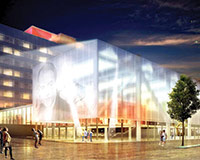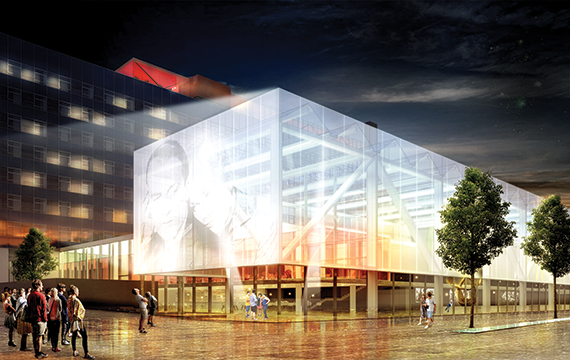
This month marks the 20th anniversary of the IRA bomb in Manchester. I have always been reluctant to talk about the bomb, both because it caused significant damage and trauma and because I have always believed that the minute you stop looking forwards is the minute you start slipping backwards.
I remember being interviewed on the day the city centre was re-opened. Asked by journalists if it was finished, I answered that if we had got it right, it would never be finished and its economic boundaries would continue to extend.
Twenty years on, the verdict has to be “so far, so good”.
The city’s strength has been a relentless focus on the future – how to capture emerging opportunities in specialisms such as advanced materials and life sciences, how to expand industries such as creative and digital, and how to attract international investment.
As such, it is more useful to think of Manchester as a city transforming rather than a city transformed.
If you look around there are cranes everywhere again, along with the buzz of construction work and a real sense of a city growing in population where 40,000 more jobs are set to be created over the next decade.
The city centre has expanded northwards through developments such as NOMA and the Northern Gateway.
It has expanded south, for instance through the First Street neighbourhood.
The new St John’s neighbourhood being created on the former ITV Granada site will be the key platform for western expansion, linking with developments across the River Irwell in Salford. The world-class Factory arts venue in St John’s will help reinforce Manchester’s emerging status as a cultural counterweight to London. We have the UK’s biggest cluster of digital and creative jobs outside London.
And not least it has expanded eastwards to the Etihad Campus – a cluster of world-class sports and community facilities centred on the Etihad Stadium, home of Manchester City FC.
Two St Peter’s Square, an 11-storey office building complementing the transformed square opposite Manchester town hall and central library, is due to be completed in January 2017. Neighbouring One St Peter’s Square, another recent addition, is home to KPMG, among others.
All this investment and development is being supported by transport infrastructure improvements, with more than £1bn being invested in rail, road and tram improvements – including a second Metrolink line through the city centre, which will boost capacity.
We will continue to support the case for HS2 and the so-called HS3 east-west scheme, along with improved road connections, to ensure Manchester is connected as part of a Northern Powerhouse. Increasing devolution to Greater Manchester is giving us more scope to shape our own destiny, too.
As a city we are rightly proud of the progress we have made in the past two or three decades through public-private partnership and long-term vision, from a position of economic and population decline to one of expansion and demand. But it is right now, and the next two decades, that should really excite us.
Sir Howard Bernstein is chief executive of Manchester City Council











